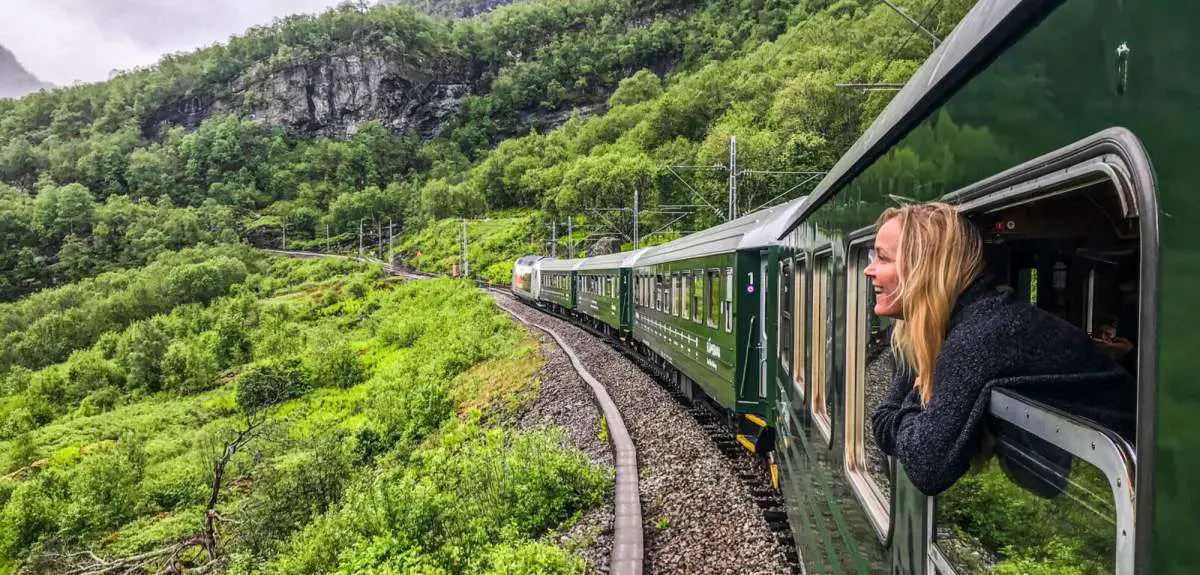In this article, we’re going to explore Norway’s self-sufficiency and how they manage to thrive off the grid. We’ll take a closer look at their off grid living practices and delve into the reasons behind Norway’s self-sufficiency. By the end, you’ll have a better understanding of how this beautiful country has achieved sustainability and independence in various aspects of their daily lives.
Exploring Norway’s Self-Sufficiency
Norway, with its breathtaking landscapes, fjords, and natural wonders, has long been a source of inspiration for those seeking a sustainable lifestyle. The country’s commitment to self-sufficiency is evident in its efforts to promote off grid living and harness renewable energy sources. In this article, we will delve into the benefits and challenges of off grid living in Norway, explore the country’s renewable energy initiatives, examine its energy policies, agriculture and food production, sustainable transportation, waste management and recycling practices, education and innovation, environmental protection measures, sustainable architecture, lifestyle and mindset, and economic benefits. We will also discuss the global impacts and inspiration that Norway provides, as well as the challenges and future prospects that lie ahead.
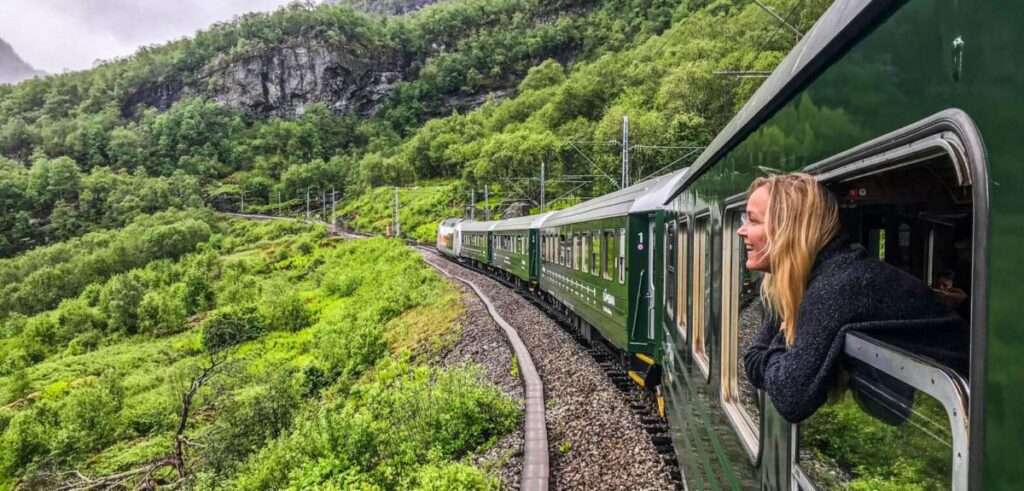
Benefits of Off Grid Living in Norway
Living off the grid in Norway offers numerous benefits, making it an attractive option for those seeking a more self-sufficient lifestyle. First and foremost, off grid living allows individuals to reduce their environmental footprint by relying on sustainable energy sources and minimizing waste. By generating their own energy, individuals can significantly reduce their carbon emissions and contribute to combating climate change. Moreover, off grid living provides a sense of independence and self-reliance, allowing individuals to disconnect from the conventional power grid and instead rely on their own renewable energy sources. This can also lead to significant cost savings over time, as there is no need to pay for electricity bills or other public utilities.
Challenges of Off Grid Living in Norway
While off grid living in Norway comes with many benefits, it also poses certain challenges. The country’s extreme climate and harsh winter conditions can make it challenging to rely solely on renewable energy sources, particularly during periods of low sunlight or wind. This necessitates the need for backup energy sources or energy storage systems, which can add to the initial costs of setting up an off grid system. Additionally, off grid living often requires a significant upfront investment in renewable energy infrastructure, which may not be financially viable for everyone. Furthermore, the remote location of many off grid properties in Norway can pose logistical challenges when it comes to accessing basic amenities and services.
Sustainable Energy Sources in Off Grid Living
Off grid living in Norway relies heavily on sustainable energy sources to meet the energy needs of its residents. The country boasts an abundance of renewable energy resources, including hydropower, wind power, and solar energy. These sources provide a reliable and environmentally friendly alternative to fossil fuels.
Hydropower as the Primary Energy Source
Hydropower is the backbone of Norway’s renewable energy infrastructure. The country’s vast network of rivers and waterfalls provides an ideal setting for hydroelectric power plants, which generate electricity by harnessing the energy of moving water. Hydropower accounts for a significant portion of Norway’s energy production, making it a key component of off grid living.
Wind Power Contributions
Norway’s windy coastal regions offer excellent opportunities for harnessing wind power. Wind turbines strategically located in these areas efficiently capture the energy of the wind, converting it into electricity. Wind power is a valuable addition to off grid systems in Norway, providing a consistent source of renewable energy.
Solar Energy Potential
Despite its positioning in northern latitudes, Norway still benefits from a considerable amount of sunlight, particularly during the summer months. Solar energy systems, including photovoltaic panels and solar thermal collectors, can be utilized to capture and convert solar energy into electricity or heat. By incorporating solar energy into off grid systems, residents can benefit from renewable and clean energy even in regions with limited sunlight.
Norway’s Renewable Energy Initiatives
Norway has taken proactive measures to promote and facilitate the adoption of renewable energy sources across the country. These initiatives aim to reduce dependency on fossil fuels, mitigate climate change, and support sustainable development.
Government Incentives for Renewable Energy
The Norwegian government provides various incentives and subsidies to encourage the use of renewable energy sources, making it more accessible and affordable for individuals and businesses. These incentives include tax benefits, grants, and favorable financing options. By incentivizing the transition to renewable energy, the government plays a crucial role in facilitating off grid living and sustainable energy practices.
Carbon Pricing and Emission Reduction
Norway has implemented a carbon pricing mechanism, imposing a tax on carbon emissions. This economic instrument encourages businesses and individuals to reduce their carbon footprint by incentivizing emission reduction practices and the adoption of renewable energy sources. Carbon pricing serves as a powerful tool in driving the transition towards a more sustainable energy landscape.
Investment in Green Technologies
Norway recognizes the importance of investing in research and development of green technologies to advance sustainable solutions. Significant investments have been made in various sectors, including renewable energy, energy storage, and electric transportation. These investments not only contribute to Norway’s self-sufficiency but also position the country as a leader in sustainable innovation.
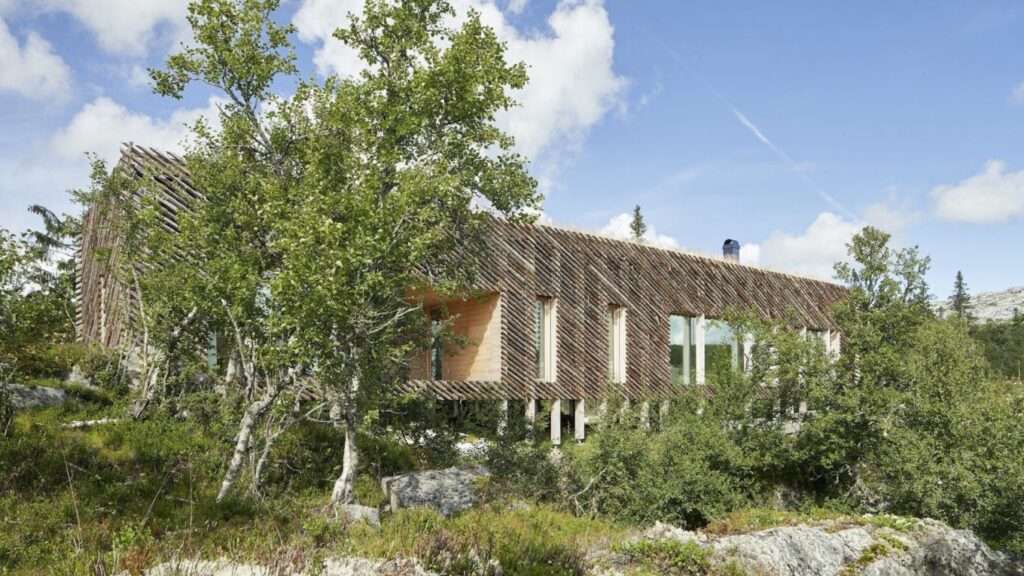
Norway’s Agriculture and Food Production
Self-sufficiency extends beyond energy production in Norway, with a focus on supporting local agriculture and ensuring food security.
Support for Local Agriculture
The Norwegian government actively supports local agriculture through subsidies and regulations that favor domestic food production. This support not only helps to reduce dependence on imported food but also ensures that food production practices adhere to high environmental and animal welfare standards.
Aquaculture and Fisheries Industry
Norway’s coastal location enables a thriving aquaculture industry, particularly in salmon farming. Sustainable practices are implemented to maintain the health and productivity of the marine environment, ensuring the long-term viability of the fisheries industry. By promoting responsible aquaculture, Norway contributes to self-sufficiency and a sustainable food system.
Food Security Measures
Norway prioritizes food security through strategic planning and cooperation between relevant stakeholders. This includes measures such as agricultural diversification, storage facilities for essential food items, and promoting food education. These initiatives are crucial for ensuring a stable and secure food supply, especially in times of crisis or disruptions to global food chains.
Norway’s Sustainable Transportation
Sustainable transportation plays a pivotal role in achieving self-sufficiency and reducing greenhouse gas emissions. Norway has implemented various measures to promote clean and efficient transportation systems.
Promotion of Electric Vehicles
Norway leads the world in electric vehicle (EV) adoption rates, supported by significant government incentives and infrastructure development. EVs offer a cleaner alternative to traditional gasoline-powered vehicles and help to reduce air pollution and carbon emissions. By promoting the use of electric vehicles, Norway paves the way for a more sustainable and self-sufficient transportation system.
Infrastructure for Cycling
Norway invests in infrastructure that encourages and facilitates cycling as a mode of transportation. Dedicated cycling lanes, bicycle-sharing programs, and bike-friendly urban planning contribute to reducing reliance on cars and promoting sustainable and active transportation options. Cycling infrastructure not only improves air quality but also promotes physical health and well-being.
Public Transportation Systems
Efficient and accessible public transportation systems are fundamental to reducing private vehicle usage. Norway prioritizes the development of comprehensive public transportation systems, including buses, trams, and trains, to provide reliable and sustainable alternatives to private car ownership. These systems contribute to reducing traffic congestion, lowering emissions, and enhancing overall mobility.
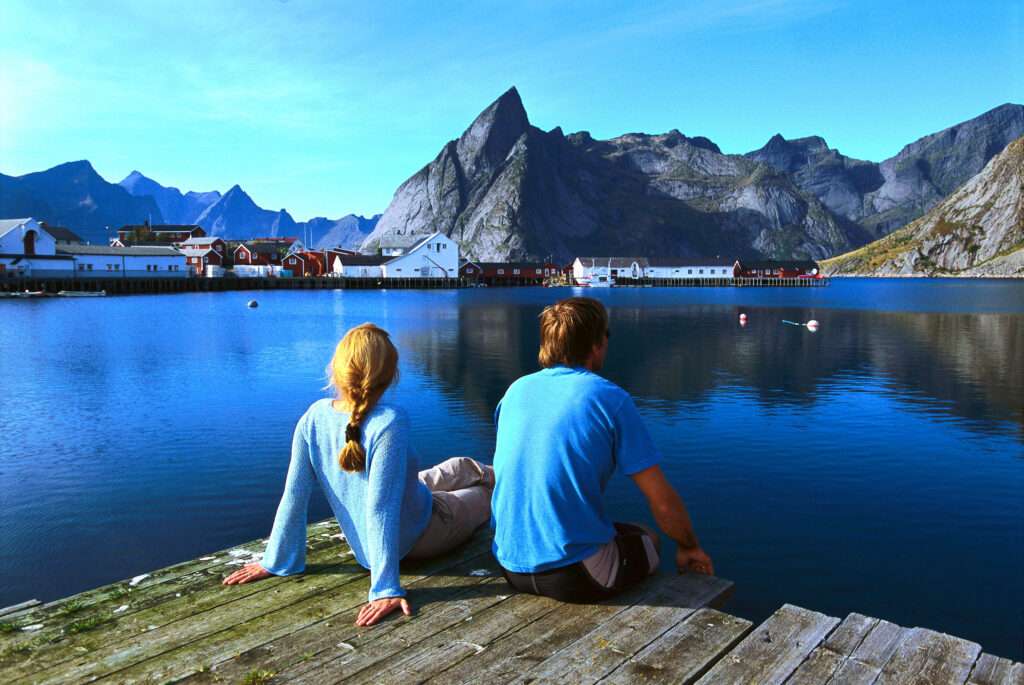
Waste Management and Recycling
Proper waste management and recycling practices are crucial components of self-sufficiency and environmental preservation. Norway has implemented innovative strategies to optimize waste management and progress towards a circular economy.
Effective Waste Management Strategies
Norway emphasizes waste prevention and reduction through source separation and recycling initiatives. Extensive recycling programs are in place, covering a wide range of materials, including paper, glass, plastic, and metal. The country actively promotes the segregation of waste at the household level, making recycling convenient and accessible for all.
Circular Economy Approach
Norway adopts a circular economy approach, aiming to minimize waste generation and maximize resource efficiency. This involves strategies such as repair and reuse, product life extension, and material recycling. By shifting towards a circular economy, Norway minimizes the reliance on raw materials extraction and reduces environmental impacts associated with traditional linear production systems.
Plastic Recycling Initiatives
Norway places particular emphasis on plastic recycling due to the environmental challenges posed by plastic waste. The country has established a well-developed plastic recycling infrastructure, ensuring that plastic waste is diverted from landfills and instead recycled into new products. As plastic pollution remains a global concern, Norway’s plastic recycling initiatives serve as an inspiration for other countries striving for sustainability.
Education and Innovation
Norway recognizes that education and innovation are vital pillars in achieving sustainability and self-sufficiency. The country invests in research and development and emphasizes education for sustainable practices.
Investment in Research and Development
Norway allocates significant resources to research and development, with a focus on sustainable technologies and solutions. This investment enables the development of cutting-edge innovations that support self-sufficiency and contribute to the global sustainability movement. Research institutions and universities play a vital role in advancing sustainable practices and knowledge.
Education for Sustainable Practices
Norwegian schools and educational institutions prioritize environmental education and sustainability literacy. Students are educated about the importance of sustainable practices, renewable energy, waste management, and biodiversity conservation. By integrating sustainable education into curricula, Norway fosters a culture of environmental stewardship and empowers younger generations to contribute to a greener and more self-sufficient future.
Public Engagement in Sustainable Solutions
Norway actively engages the public in sustainable solutions and encourages citizen participation. This includes awareness campaigns, public consultations, and platforms for sharing ideas and initiatives. By involving the public, Norway ensures that sustainable practices are embraced by society as a whole and not confined to niche groups or industries.
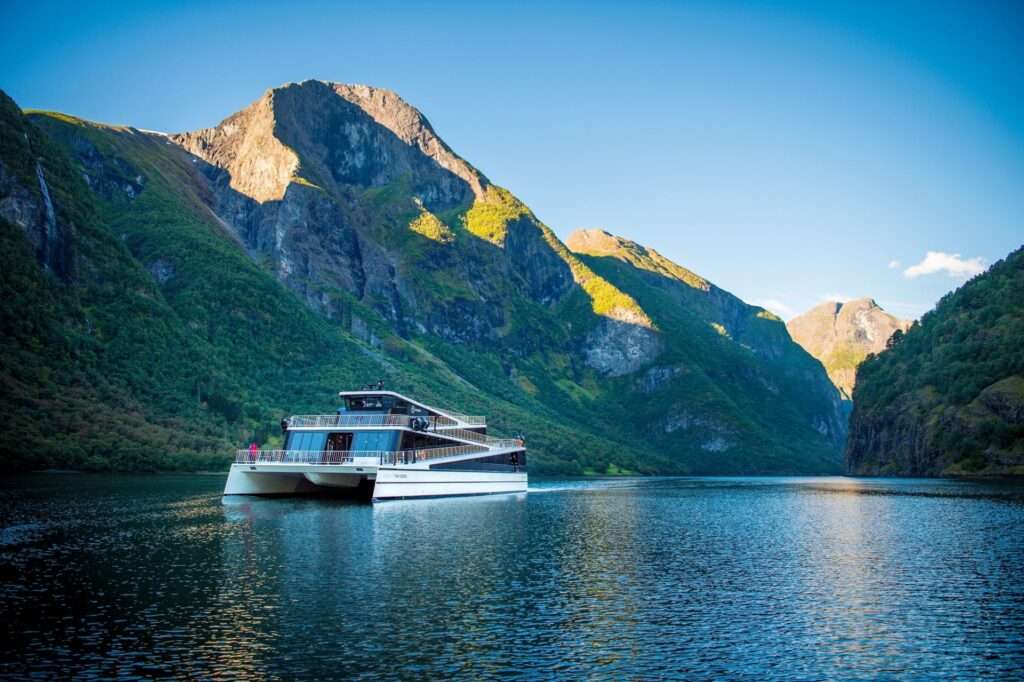
Norway’s Environmental Protection Measures
Norway’s commitment to self-sufficiency extends to the conservation and protection of its natural landscapes and biodiversity.
Conservation of Natural Landscapes
Norway takes pride in its pristine natural landscapes and places great importance on their conservation. National parks, nature reserves, and protected areas are established to safeguard unique ecosystems and maintain biodiversity. These measures ensure that Norway’s natural heritage is preserved for future generations to enjoy.
Protection of Biodiversity
Norway recognizes the value and importance of biodiversity in ecosystem health and resilience. The country actively implements conservation measures to protect endangered species and habitats. Efforts are made to restore degraded ecosystems and promote sustainable land-use practices that prevent further biodiversity loss.
Efforts to Reduce Pollution
Norway places stringent regulations on industrial activities and aims to minimize pollution. Strict environmental standards are enforced to reduce air and water pollution, ensuring the preservation of the country’s pristine environment. By promoting clean technologies and sustainable practices, Norway mitigates the adverse impacts of pollution on ecosystems and human health.
Norway’s Sustainable Architecture
Sustainable architecture plays a vital role in achieving self-sufficiency and minimizing environmental impact. Norway is at the forefront of innovative architectural practices that prioritize energy efficiency and sustainable materials.
Passive House Design
Passive house design principles are widely embraced in Norway to optimize energy efficiency and reduce heating and cooling demands. Well-insulated buildings, airtight construction, and efficient ventilation systems ensure comfortable indoor climates while minimizing energy consumption. Passive house design plays a vital role in off grid living, as it maximizes the use of renewable energy sources.
Energy Efficient Buildings
Norway promotes energy-efficient building practices through strict building standards and regulations. These standards encompass aspects such as insulation, heating systems, lighting, and appliance efficiency. By prioritizing energy efficiency, Norway reduces energy consumption, mitigates environmental impact, and supports self-sufficiency.
Use of Natural and Recycled Materials
Norwegian architecture emphasizes the use of natural and recycled materials in construction. Timber, a renewable and abundant resource in the country, is widely utilized as a sustainable building material. Additionally, recycled materials, such as reclaimed wood and recycled concrete, are incorporated into building projects to reduce the demand for virgin materials and minimize waste.
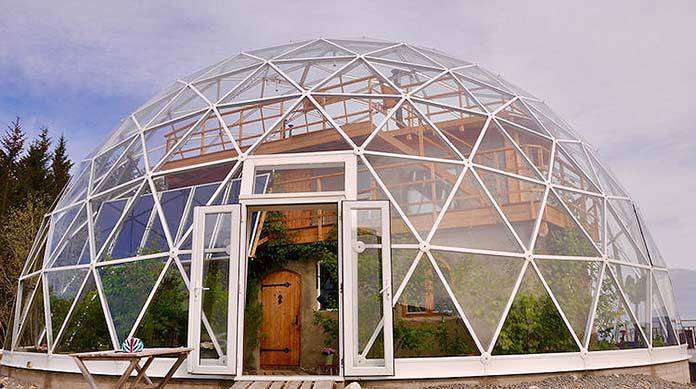
Norwegian Lifestyle and Mindset
Norwegian lifestyle and mindset are deeply intertwined with nature and sustainability. The country’s cultural values and practices contribute significantly to its self-sufficiency efforts.
Emphasis on Nature and Outdoor Activities
Norwegian culture places a strong emphasis on spending time in nature and engaging in outdoor activities. The population’s close connection with the natural environment fosters a sense of appreciation and responsibility towards preserving it. This mindset translates into sustainable practices and a collective commitment to self-sufficiency.
Minimalist Living and Consumption
Norwegians are known for their minimalist approach to living and consumption. The focus is on quality rather than quantity, and the avoidance of unnecessary material possessions. Minimalist living reduces waste generation and resource consumption while promoting a more sustainable and self-sufficient lifestyle.
Community Collaboration and Sharing
Norway values community collaboration and sharing resources. Collaborative initiatives, such as cooperative gardens and community-owned renewable energy projects, are prevalent throughout the country. By sharing resources and expertise, communities support each other in achieving self-sufficiency goals and foster a sense of collective responsibility for sustainability.
Economic Benefits of Self-Sufficiency
Self-sufficiency brings about various economic benefits for Norway, contributing to its overall prosperity and resilience.
Reduced Dependence on Imports
By promoting self-sufficiency, Norway reduces its dependence on imported goods and raw materials. This reduces vulnerabilities to global market fluctuations and price volatility, ensuring stability in times of economic uncertainty. Additionally, reduced imports lead to a positive trade balance, enhancing Norway’s economic resilience.
Job Creation in Green Sectors
The transition to self-sufficiency in Norway generates employment opportunities in green and sustainable sectors. The renewable energy industry, sustainable agriculture, and eco-tourism are just a few examples of sectors experiencing growth and job creation. These employment opportunities contribute to economic development in rural areas and provide a path towards a more sustainable and equitable society.
Opportunities for Exporting Sustainable Technologies
Norway’s commitment to self-sufficiency and sustainability positions it as a leader in green technologies and practices. The country’s expertise in renewable energy, sustainable agriculture, and innovative solutions presents opportunities for exporting knowledge and technologies to other countries. This not only generates economic value but also enables Norway to contribute to global sustainability efforts.
Global Impacts and Inspiration
Norway’s self-sufficiency journey has global impacts and serves as a source of inspiration for other countries striving for sustainability.
Norway as a Model for Sustainable Development
Norway’s holistic approach to self-sufficiency, encompassing renewable energy, sustainable agriculture, transportation, waste management, and more, serves as a model for sustainable development. The country’s success in balancing economic growth with environmental preservation provides valuable insights and lessons for other nations pursuing similar goals.
Contributions to International Climate Change Efforts
Norway actively contributes to international climate change efforts through its commitment to reducing greenhouse gas emissions and transitioning to renewable energy sources. The country’s initiatives, such as carbon pricing and investments in sustainable technologies, serve as practical examples of effective climate action. Norway’s efforts inspire and motivate other nations to take decisive action in combating climate change.
Inspiration for Other Countries to Achieve Self-Sufficiency
Norway’s self-sufficiency journey is a testament to the feasibility of achieving sustainability. By showcasing successful models and best practices, Norway inspires other countries to adopt self-sufficiency as a guiding principle. The country’s commitment to environmental preservation, along with its innovative approaches, ignites hope and drives ambitious goals worldwide.
Challenges and Future Prospects
Achieving self-sufficiency is an ongoing journey for Norway, and it comes with its own challenges and future prospects.
Balancing Economic Growth and Environmental Preservation
One of the key challenges for Norway is to strike a balance between economic growth and environmental preservation. As the country progresses towards self-sufficiency, ensuring sustainable practices are embedded in all sectors becomes crucial. It requires continued commitment to green development and the implementation of policies that promote sustainability without hindering economic growth.
Adapting to Climate Change
Norway, like other countries, faces the challenges posed by climate change. Extreme weather events, rising sea levels, and changing precipitation patterns impact various sectors, including agriculture, energy production, and infrastructure. Adapting to these changes necessitates ongoing innovation, forward-thinking policies, and active collaboration with international partners.
Continued Innovation and Adaptation
Maintaining self-sufficiency and sustainability requires constant innovation and adaptation. Norway must continue to invest in research and development, fostering a culture of innovation that supports the growth of green technologies and practices. Flexibility and adaptability will be crucial in responding to emerging challenges and opportunities in the dynamic landscape of sustainability.
Conclusion
Norway’s commitment to self-sufficiency is reflected in its efforts to promote renewable energy, sustainable agriculture, transportation, waste management, education, and innovation. By embracing a holistic approach to sustainability, Norway has positioned itself as a model for other countries striving to achieve self-sufficiency. The lessons and experiences gained from Norway’s journey provide valuable insights and inspiration for the world in its pursuit of a greener and more sustainable future. Norway’s continued commitment to a greener future embodies the collective responsibility and shared vision necessary to address global challenges and achieve sustainability for generations to come.

